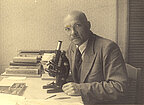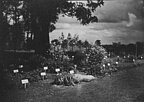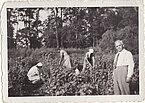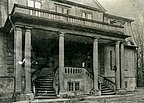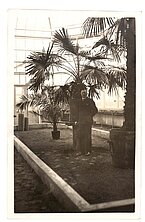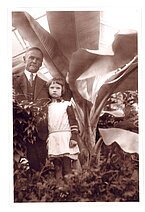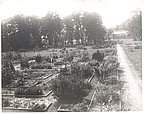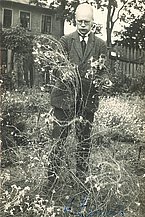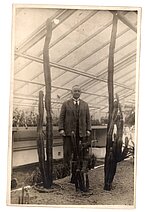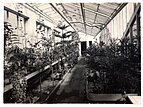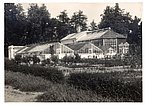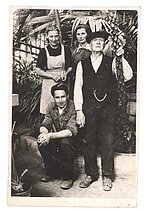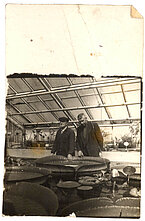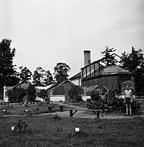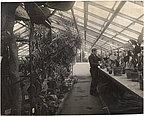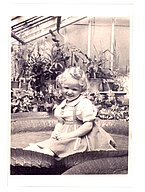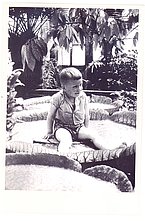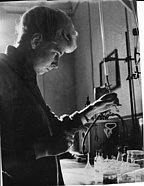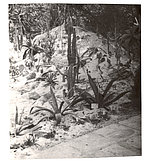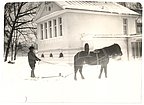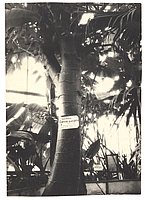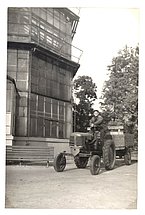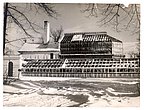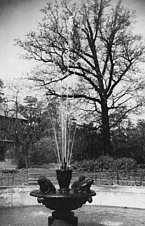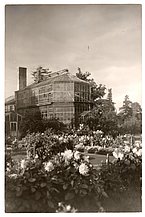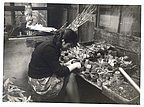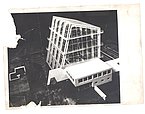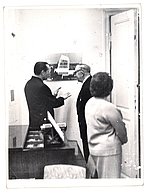1922-1930
1922: in spring the first Botanical Garden in Latvia was founded by the University of Latvia. Riga City Council allocated one hectare of land in Dreiliņmuiža for this purpose. The main objective of the Garden was to promote education and research, as well as to facilitate the knowledge in botany among public at large. First manager of the Garden till 1944 was professor Nikolajs Malta.
1923: the Botanical Garden was opened for school trips and general public. At that time there were 1,500 different plant species in collections.
1924: in spring Morphological, biological and geographical plant beds were arranged. The common number of taxons reached 2,500. First Seedlist Index Seminum was published, and a year later seed exchange with 70 other botanical gardens has started. Updating of Index Seminum and its mailing has been continued throughout the whole period of existence of the Garden, providing free-of-charge exchange with seeds among botanical gardens of the whole world.
1926: the rapid growth of the Botanical Garden facilitated the search for a larger territory. Therefore, in 1926, after the proposal from Kārlis Ulmanis (the Prime Minister of the Republic of Latvia) Wolfschmidt’s inheritors property (about 10 ha) was purchased in Rīga, Kandavas street 2. Four 18–19th century buildings have been preserved in the territory of the Garden till today and they have been granted the status of wooden architecture monuments of national significance.
Till the World War I the work in Garden was very intensive and fruitful. Algae, moss, mushrooms, lichens, fossil flora, systematics of the highest plants, flower morphology, habitats of plants of Latvia, as well as some work in genetics was done. Since 1926, the results of research were published in Acta Horti Botanici Universitatis Latviensis.
1928: to accommodate tropical, subtropical and succulent plants, the construction of Greenhouses has been started. The set of buildings included the Palm House, separate section for orchids, tropical water plants, and succulents.
1930-1940
1932: to promote the development of the Garden, Professor N. Malta established the Association of the Friends of the Botanical Garden.
1933: order, biological and cultivated plant beds were set up, as well as the Arboretum and Test fields. More than 3,100 different plants were collected in the Greenhouses, and around 4,400 various plants in – open air collections.
1936: for international seed exchange, contacts with already 245 botanical gardens were maintained.
1937: about 7,500 plants from 225 plant families were presented to visitors of the Garden.
1940-1950
1941–1944: during the World War II, German army units were deployed in the Garden and only three gardeners were allowed to continue their work. Part of collections was destroyed, Arboretum trees were used for heating the Greenhouses to preserve collections of tropical and subtropical plants.
1949: in the post-war period work of the Botanical Garden was renewed. Territory was enlarged by 6 ha. Research about apricot and peach introduction and acclimatization has been started.
1950-1960
1950's: while Latvia was incorporated in the Soviet Union, all activities of the Botanical Garden were coordinated by the USSR Botanical Gardens Council, which defined the overall topic of research – Introduction and Acclimatization of Plants. Hence the plant introduction and selection, biological study, agrotechnical study and multiplication of economically significant plants, mainly fruit trees, decorative plants, as well as species and varieties of agricultural plants, were the main topics of research in the Botanical Garden. These activities created changes in the landscape of the garden. In the mid-1950's, the so-called Michurin Garden was in the central part of the Botanical Garden where different varieties of fruit-trees cultivated by the Russian Soviet breeder Ivan Michurin were grown.
Fundamental work was done in introduction and acclimatization of magnolias (Tekla Čaupale), hydrangeas (Guntars Vītoliņš), low and prostrate bushes (Maija Bice), perennial plants (Andris Orehovs), and decorative grasses and ferns (Gunita Briede). Alongside with that, selection work was done. Outstanding achievement in selection of peaches and apricots for the agroclimatic conditions in Latvia were reached by Viktors Vārna. Ornamental plant selection work was done by Elvīra Zvaigznīte (phlox and Michaelmas daisies), Kārlis Ruks (dahlias), and Ādolfs Zorgevics (lilies and gladioli). The largest work done by Professor Rihards Kondratovičs over the past fifty years and which still continues, is introduction, selection, physiology research and working out of methods of multiplication of rhododendrons.
1953: reconstruction of the Greenhouses. The roof became by 12 m higher after the reconstruction.
1960-1970
1962: when Andris Orehovs turned to introduction and study of perennial plants, essential changes were started in the Garden. By arranging decorative ecological expositions the present-day image of the Garden was created – it became a landscape garden.
1969: the construction of Greenhouses and administrative building was launched.
1970-1980
1972: the brand new Greenhouses are completed. Height – 24m, floor space – 550 m2. These parameters are perfect to launch new collections of palm trees, exotic conifer species, and a high variety of other subtropical trees.

 CONFERENCE
CONFERENCE
